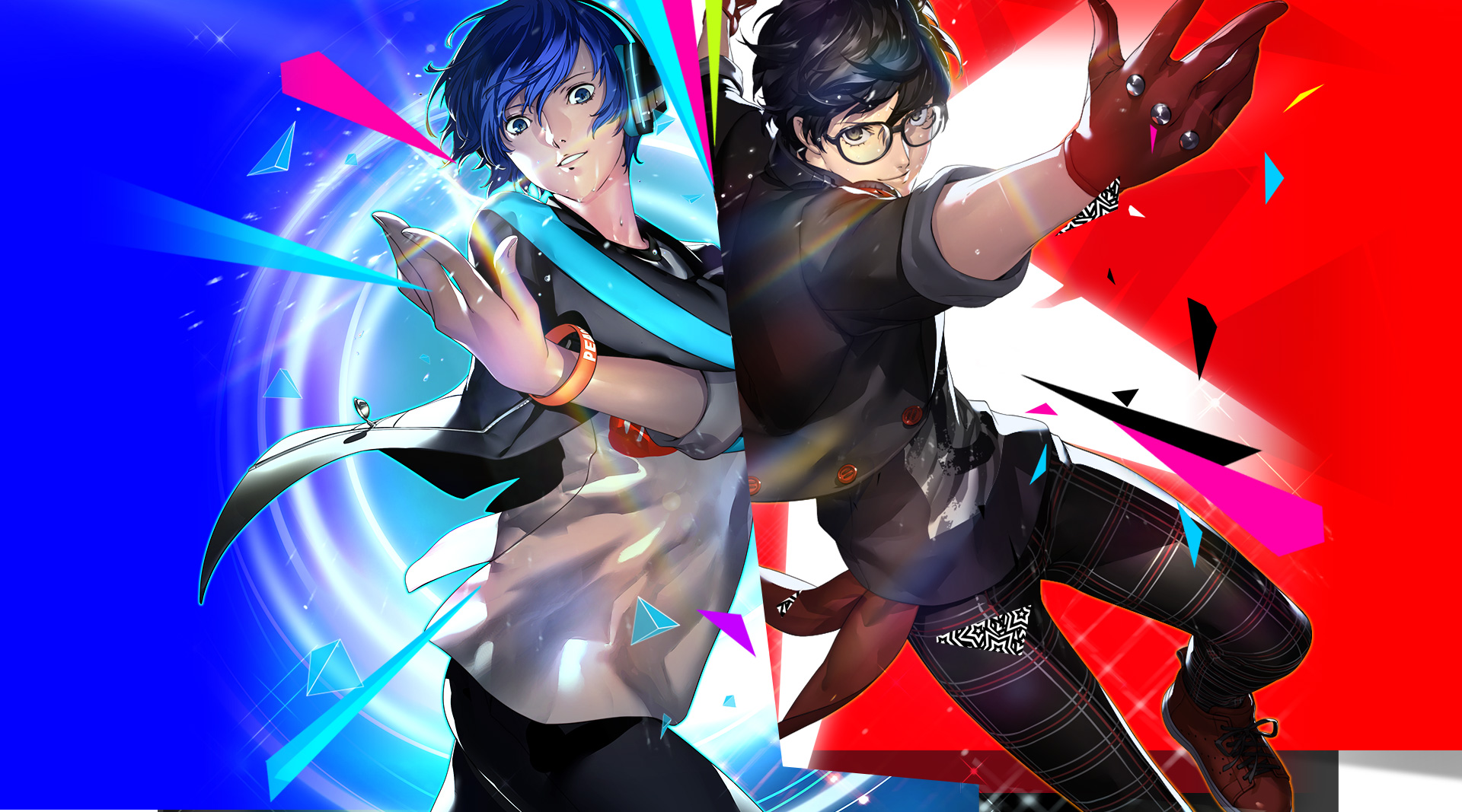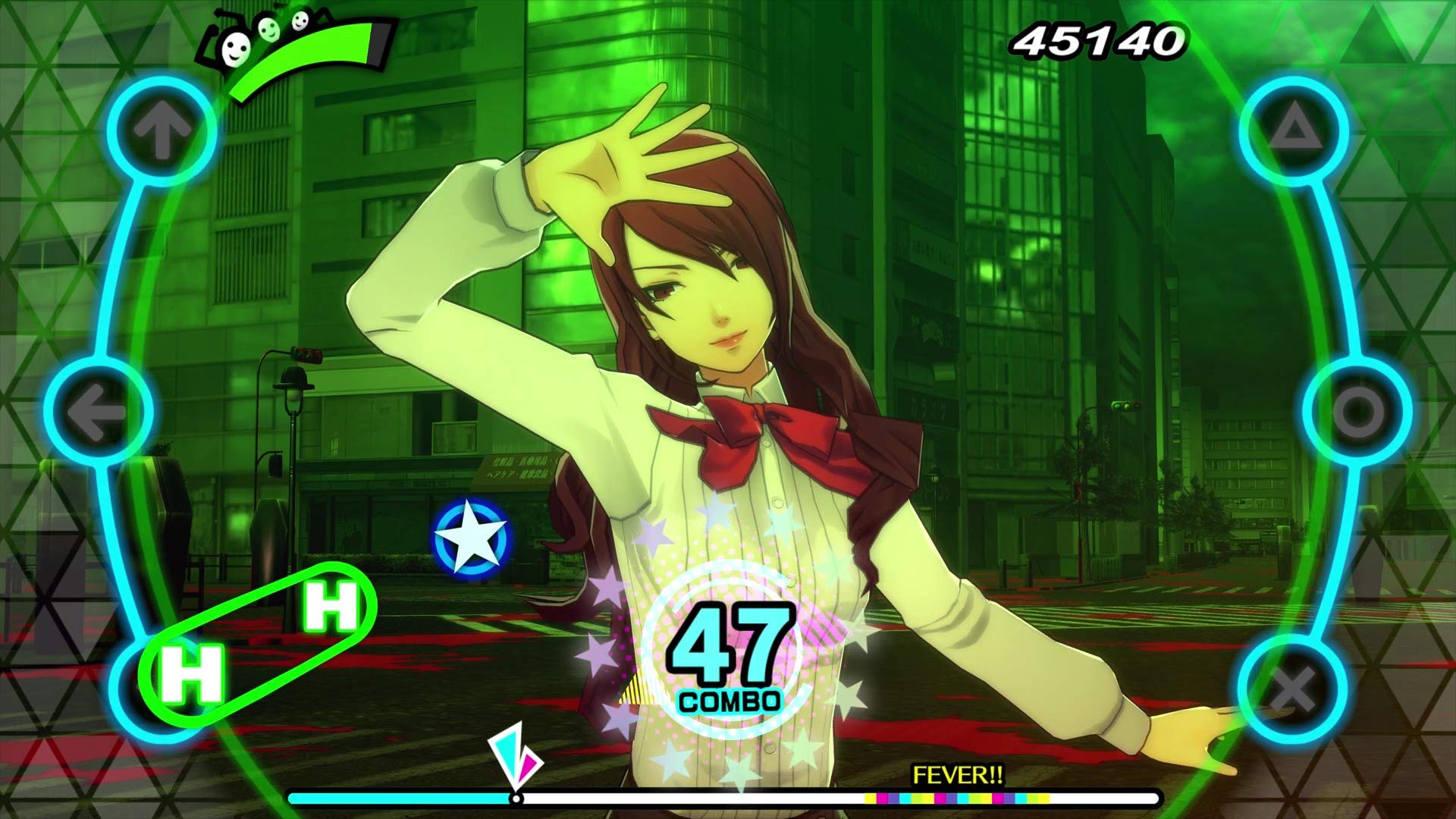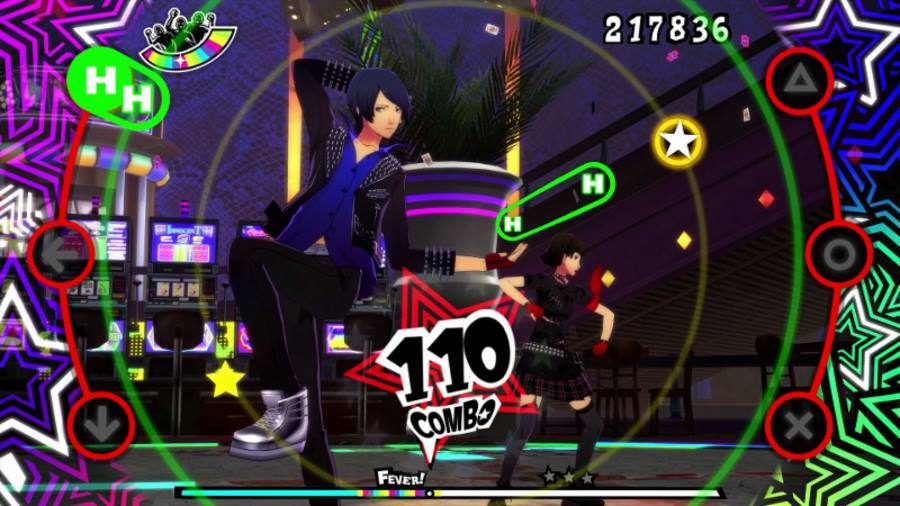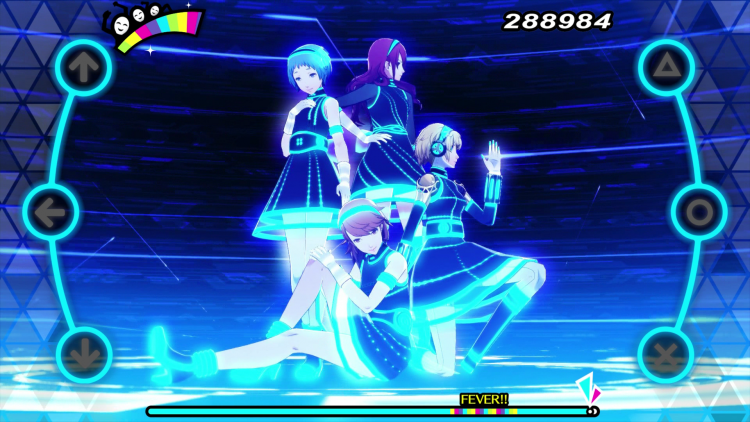Persona 4: Dancing All Night was the reason I got a PlayStation TV. Though the remote play rarely worked, the interface was laughable, and it required a first-party memory card to be functional, I was ecstatic to get my hands on the game.
Needless to say, I was completely hooked from the first moment.
Part of the reason is that the Persona series has always had amazing music courtesy of Shoji Meguro, but the remixes featured in P4D topped the originals consistently. Many of them are mainstays on my workout playlist (especially Yuu Miyake’s remix of “NOW I KNOW.”) But that’s not what made Persona 4: Dancing All Night a great game.
What really made it stand out in a crowded genre was the fact that it featured a 20+ hour story mode, full of all of the twists, turns, and emotional climaxes that the mainline series is known for. It was unlike anything I had ever played, halfway between a visual novel and a rhythm game. I loved it, and it made grinding tracks to unlock costumes and songs insanely fun.
It’s no surprise that I was so excited to review the Persona Dancing: Endless Night Collection that I pestered my editor about it weekly for months on end.
I mention this only to say that if you were/are planning on buying the Persona Dancing: Endless Night Collection because you expected Persona 5: Dancing Star Night and Persona 3: Dancing In Moonlight to offer the same depth as 4, you’ll be sorely disappointed.
Let’s Dance
For those of you who aren’t familiar with the series, the Persona series of rhythm games are spin-offs of the mainline Persona games, taking place after the events of the main game of which they’re numbered.
The controls are fairly simple and will feel natural to anyone who’s played a button-based rhythm game before; simply tap or hold buttons to the beat, flicking the joystick to boost your score with optional scratches. You’re also rewarded for hitting special “Fever” notes — if you manage to hit three, you’ll see a special partner dance sequence and really boost your score.
At higher levels, this really gets challenging in terms of visual stimulus — there’s a lot going on.
This is where things get a little wonky with the scoring system as well — depending on where a gauge is by the time you end the song, you might not clear the track. This is super frustrating because it means that if you’re looking to clear a song, the only thing that really matters is nailing the last third of it.
You could have a full combo going and then miss four notes at the end and fail the track, then miss 50 notes during the first half of the song and clear it if you’re able to pull it together by the end.
The main draw of the rhythm portions is in the dancing sequences that play out as you mash to the beat. Each track has bespoke choreography, and if you can split your attention enough to watch as Ryuji and Futaba bust a move together, you’ll be rewarded.
There’s obviously been a lot of effort put in, and it culminates in a couple of group tracks in each game that really shine.
The Music
I’ll say this right now: if you’re not a fan of the music in the Persona series, skip this game. Seriously. Close out of this review tab and read something else, maybe one of our wonderful Red Dead Redemption 2 guides or our review of Pokemon Lets GO Pikachu and Eevee.
But if you’re a fan, each game in the collection offers dozens of tracks, featuring impeccable remixes by the likes of DE DE MOUSE, Lotus Juice, and even Hideki Naganuma, the mad genius behind the soundtracks to the Jet Set Radio series.
As a collection, the soundtracks shine, but as three individual games, you’ll likely come up wanting. Each game doesn’t really have all that many songs on its own, and many of them are remixes of the same song. Both Persona 5: Dancing Star Night and Persona 3: Dancing In Moonlight only have 25 songs each, and that’s paltry for a rhythm game — even if many of the songs are brand new.
Anti-Social Link
Now, in Persona 4: Dancing All Night, the paltry song list was excusable since the story mode was a sweeping, long, unexpected symphony that introduced each song as special, one with significance to the story.
Neither Persona 3: Dancing In Moonlight or Persona 5: Dancing Star Night has that to fall back on since they have both axed the story mode entirely.
In their places are a brand-new “Social” tab, which is supposed to be reminiscent of how you build up social links in the Persona games.
It’s a cute idea. As the player makes progress, unlocks achievements, and hits milestones in the game, they’ll be able to see scenes between the player character and the other characters. As they progress, they can even go into their private dressing rooms and play a pathetically simple game of hide-and-seek. It’s very fan-service-y, with characters reminiscing on the events of their games and what they’ve been up to or how they have changed since.
It’s nice, but… why?
I mean, why have a freaking HIDE-AND-SEEK mini-game in a rhythm game based on a role-playing game that itself is based on the folklore of a thousand different cultures? Why did they cut the one function of Persona 4: Dancing All Night that separated it from other cookie-cutter mash-the-button rhythm games? Why am I getting more and more enraged as I write these words?
Okay, I’m going to go for a walk and calm down. Back soon.
The Verdict
It was snowing. The walk sucked. I’m still angry at these games.
Here’s the problem with the Persona Dancing: Endless Night Collection. Rhythm games have already been perfected. Dance Dance Revolution, Guitar Hero, and Rock Band represent the Platonic ideal of what a rhythm game should be. Yes, you need accessories to play them, but the trade-off is a sublime feeling of flow when you perfect your technique, one where you can lose yourself in the music. It’s perfect, and it’s why I love rhythm games in the first place.
In order for a rhythm game without a specialized peripheral to offer a gameplay experience that even comes close to matching that feeling, it needs to offer some above-and-beyond gameplay hook. Many touchscreen-based rhythm games get around this issue by timing the music to touchscreen taps in a way that makes it seem like the player is actually playing the notes, as if they’re cueing the music on a synthesizer or piano.
Persona 4: Dancing All Night got around this with a story mode that turned the game into something more than itself.
As I said before, at the time, I had never played anything quite like Persona 4: Dancing All Night. It was a visual novel with branching paths, a wonderful and heart-rending mystery, and a climax that had me at the edge of my seat. And to top it all off, the whole story dealt with the power of music, of one specific beautiful song that you’re able to hear as the credits roll.
Sure, when you finish the story, you’re not left with much to do other than chasing scores, unlocking the rest of a paltry tracklist, and playing dress-up, but the story mode excused all that.
Persona 3: Dancing In Moonlight and Persona 5: Dancing Star Night have no excuses. Despite the flash, they are both bare-bones experiences, and it’s clear that the team couldn’t bottle the same lightning they had for Persona 4: Dancing All Night. It’s a shame, because bringing these games West was a pretty big deal for Atlus, riding on the massive success of Persona 5, and if the games under-perform, it doesn’t bode well for a possible Persona 6 dancing game.
Having said that, the game mechanics work (with the exception of the weird gauge system,) and chasing scores is satisfying. It’s also absolutely undeniable that the main draw here is in the music. It’s all incredibly great, and the remixes do the originals justice. But without any kind of hook, without a story mode, without that draw, it’s really hard to recommend Persona 3: Dancing In Moonlight and Persona 5: Dancing Star Night unless you’re a rabid fan of the series who will be content playing and replaying the same tracks to unlock costumes for characters.
For everyone else, just wait for the soundtracks to show up on Spotify or Amazon, and save your time and money.
Pros
+Persona 4: Dancing All Night is a unique, must-play rhythm game, and playing it on the PS4 is a joy.
+The soundtrack bangs.
Cons
-Tracklists are shamefully short at 25 per game.
–Persona 5: Dancing Star Night and Persona 3: Dancing in Moonlight both fail to include a compelling gameplay hook to motivate the player to play more.
[Note: The developer provided a copy of Persona Dancing: Endless Night Collection for the purposes of this review.]










Published: Nov 26, 2018 03:16 pm